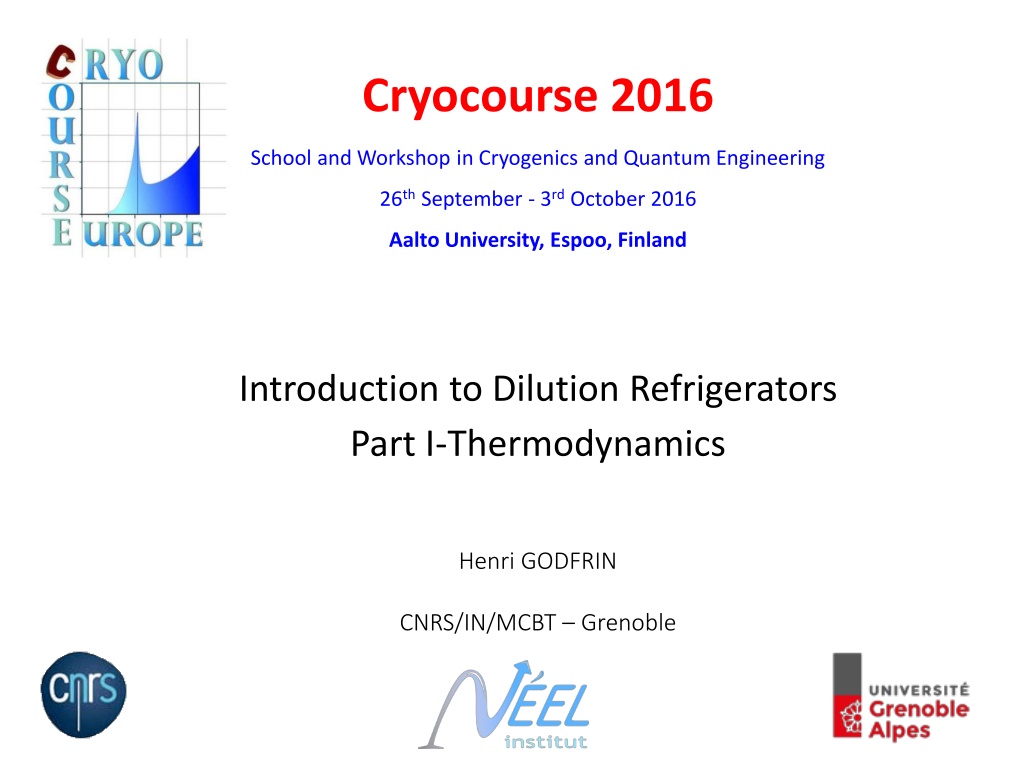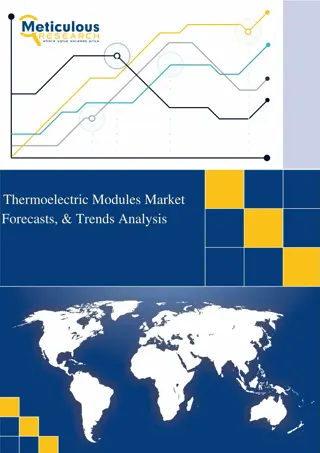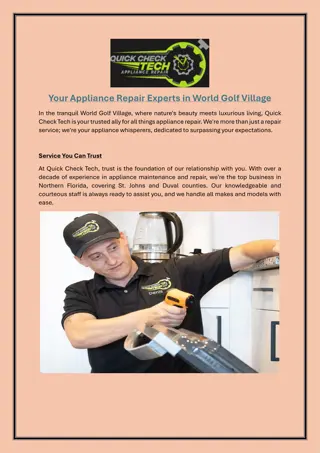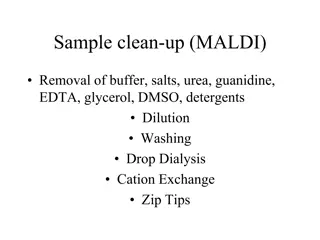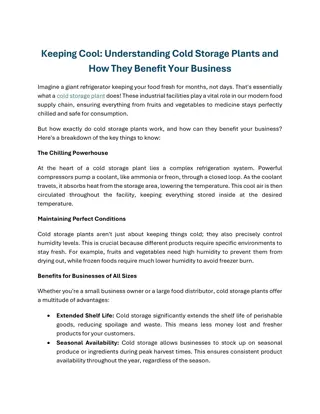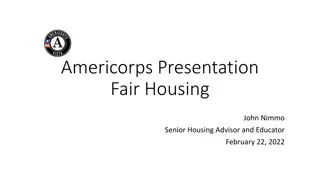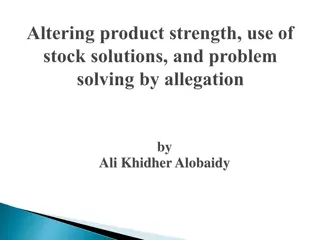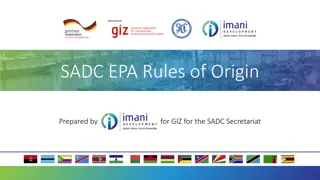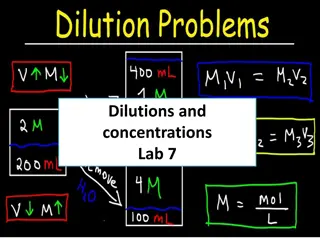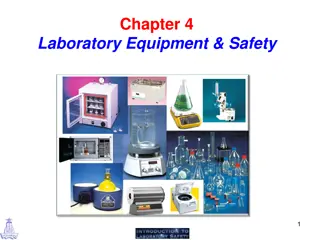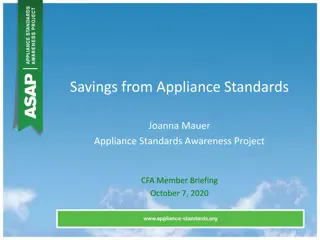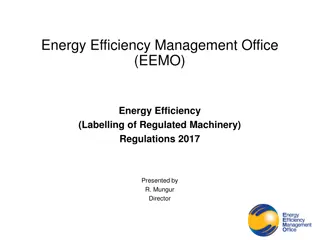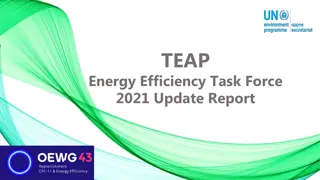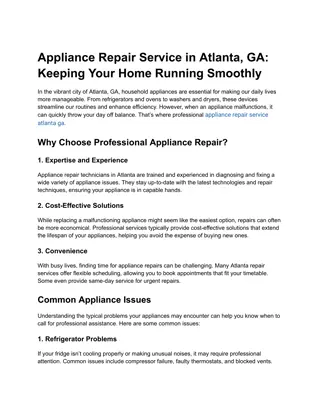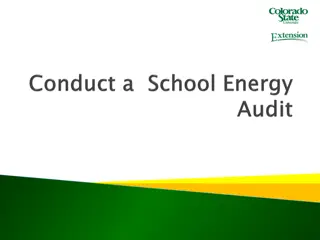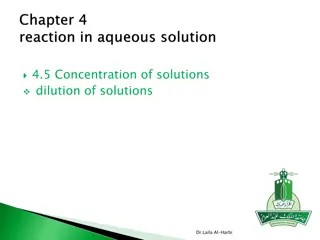Introduction to Dilution Refrigerators
This course covers the basic operation and thermodynamics of dilution refrigerators, outlining the key components such as the mixing chamber, still heater, and thermal properties of 3He and 3He-4He mixtures. Learn about the history of dilution refrigerators, including advancements in technology that have led to record low temperatures. Explore phase diagrams and phase separation in helium mixtures, and gain insights into the principles and methods behind dilution refrigeration.
Download Presentation

Please find below an Image/Link to download the presentation.
The content on the website is provided AS IS for your information and personal use only. It may not be sold, licensed, or shared on other websites without obtaining consent from the author.If you encounter any issues during the download, it is possible that the publisher has removed the file from their server.
You are allowed to download the files provided on this website for personal or commercial use, subject to the condition that they are used lawfully. All files are the property of their respective owners.
The content on the website is provided AS IS for your information and personal use only. It may not be sold, licensed, or shared on other websites without obtaining consent from the author.
E N D
Presentation Transcript
Cryocourse 2016 School and Workshop in Cryogenics and Quantum Engineering 26th September - 3rd October 2016 Aalto University, Espoo, Finland Introduction to Dilution Refrigerators Part I-Thermodynamics Henri GODFRIN CNRS/IN/MCBT Grenoble
This part of the course is based on: Basic operation of cryocoolers and related thermal machines A.T.A.M. de Waele J. of Low Temp. Physics, Vol.164, pp.179-236 (2011) (open access) Introduction to dilution refrigeration A.T.A.M. de Waele Lectures given at Cryocourse 2013 and former ones Dilution refrigerators H. Godfrin Lectures given at Cryocourse 2013 and former ones Experimental Principles and Methods Below 1 K Lounasmaa, O.V. Academic Press, London, p. 316 (1974). Matter and Methods at Low Temperatures Pobell, Frank Springer-Verlag, Berlin, p. 461 (2007). Wikipedia: https://en.wikipedia.org/wiki/Dilution_refrigerator
Outline Introduction Schematic diagram Thermodynamics of dilution refrigeration Thermal properties of pure 3He Properties of 3He-4He mixtures The 1 K bath Why a still heater The mixing chamber Osmotic enthalpy Limiting temperature of dilution refrigerators
History The dilution refrigerator principle was suggested by Heinz London in 1952 H. London, G.R. Clarke, and E. Mendoza proposed a prototype of continuous refrigerator in 1962 It was realized in 1964 in the Kamerlingh Onnes Laboratorium at Leiden University Das, P.; Ouboter, R. B.; Taconis, K. W. (1965). "A Realization of a London-Clarke-Mendoza Type Refrigerator". Low Temperature Physics LT9. p. 1253. (Tmin~220mK) B.S. Neganov and co-workers in Dubna and H.E. Hall and co-workers in Manchester went below 100 mK (1966). Dubna rapidly reached 25 mK. The principles and methods of dilution refrigeration have been substantially developed by J. Wheatley et al. at La Jolla. Modern wet refrigerators are based on the Grenoble design by Frossati and coworkers. The development of sintered silver heat exchangers Tmin led to Tmin~2 mK. Dry refrigerators were developed - by K. Uhlig et al. on GM coolers (1993), - and on Pulse-tube coolers by K. Uhlig et al. (2002) and H. Godfrin (1999 to 2003, date of first commercial unit, delivered by l Air Liquide) Lancaster has the present record of low temperatures, 1.75 mK
Phase diagram of helium mixtures By Mets501 - Own work, CC BY-SA 3.0, https://commons.wikimedia.org/w/index.php?curid=25250292
Schematic diagram of a Schematic diagram of a standard ( wet ) standard ( wet ) dilution refrigerator. dilution refrigerator. https://en.wikipedia.org/wiki/Dilution_refrigerator
Low temperature part https://en.wikipedia.org/wiki/Dilution_refrigerator
Continuously Operating 4He Evaporation Refrigerator L. E. DeLong, O. G. Symko and J. C. Wheatley, Rev. Sci. Inst. 42, 147 (1971)
Enthalpy diagram of 3He Incoming3He at P=0.5 bar and 4.2 K has a enthalpy of 99 J/mol 3He leaves the still at 0.7 K and P~0. It s enthalpy is 35 J/mol. The deficit is huge: 64 J/mol Solutions: 1K pot or condensation at high pressure
Global enthalpy balance of DR (only pure 3He flows in and out the sub-system) Without 1K pot: negative balance, External cooling needed. With a 1K pot at 1.2 K: positive balance, external heating (usually at the still ) needed. The cooling power provided by the 1 K pot to change the 3He from gas at 0.5 bar and 4.2 K to liquid at 0.5 bar and 1.2 K, is
Condensing the 3He at ~3bars At 4.2 K the minimum enthalpy (vs. Pressure) is Hm 42 J/mol near 3 bars, just above the enthalpy of the vapor at 0.7 K (35 J/mol). > steady state is possible using a heat exchanger to precool the incoming 3He !!! J. Kraus, Cryogenics 17, 173 (1977) A.T.A.M. de Waele, A.B. Reekers, H.M. Gijsman, Cryogenics 17, 175 (1977)
Osmotic enthalpy of 3He mixtures - Lines of constant osmotic pressure (solid lines, values in Pa) - Lines of constant osmotic enthalpy H3 (dotted lines values in J/mol); - and the saturation concentration of the dilute phase xs. The scale on the right gives the temperature in K.
Limiting Limitingtemperature temperature of DR of DR
